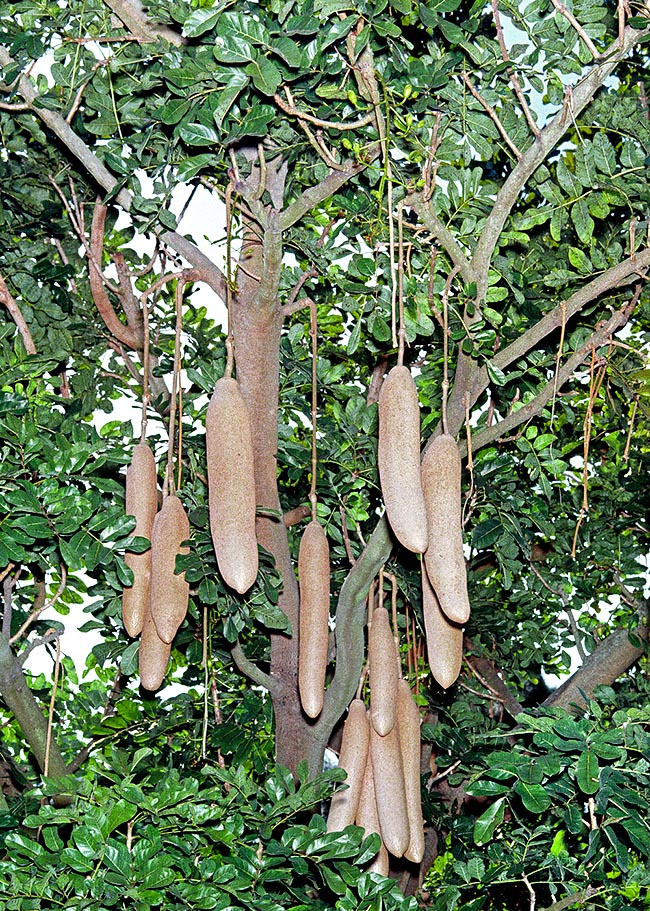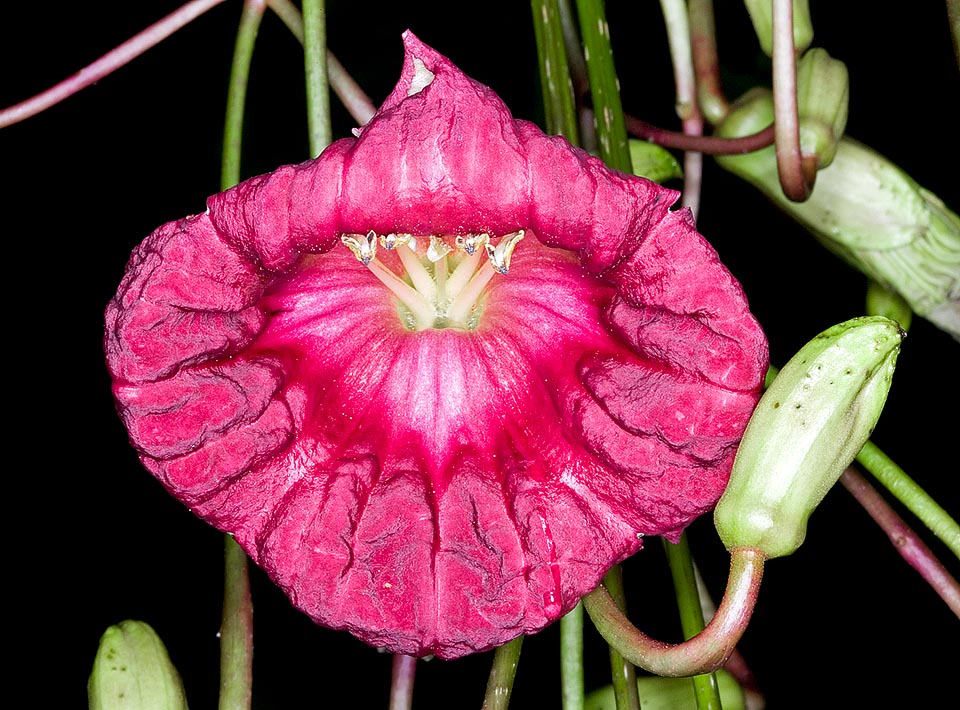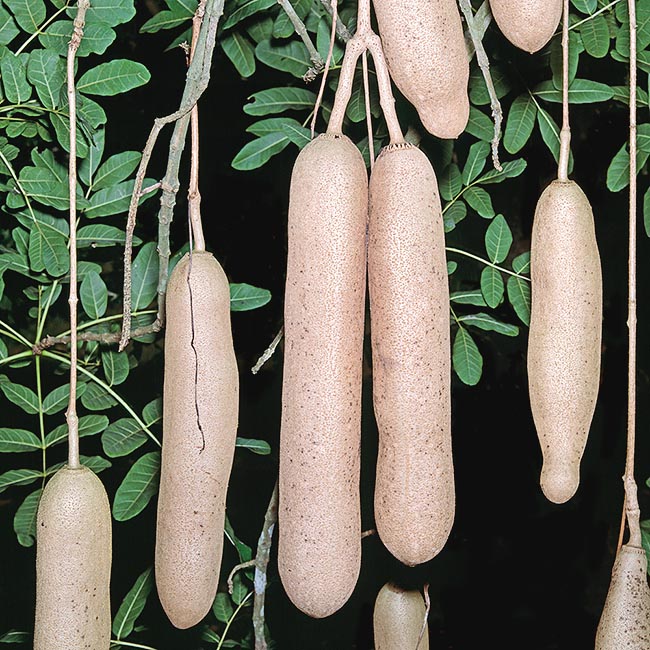Family : Bignoniaceae

Text © Pietro Puccio

English translation by Mario Beltramini

Native to tropical Africa, Kigelia africana is a semideciduous tree even 18 m tall © Giuseppe Mazza
The name of the genus comes from the name given to the plant in Mozambique; the name of the species indicates its provenience: Africa.
Common names: “albero dei salami”, “albero delle salsicce” (Italian); “sausage tree”, “sausagetree”, “cucumber tree” (English); “saucissonnier”, “faux baobab” (French); “Leberwurstbaum” (German); “árbol de la salchichas” (Spanish); “arvore da salsicha” (Portuguese).
Semi-deciduous tree of fast growth, which can reach a height of 18 metres, with smooth and greyish bark and compact and roundish crown; the leaves, long up to 50 cm, are imparipinnate with 5-13 ovate or elliptic leaflets long up to about 15 cm, coriaceous, tough to the touch, dark green, with prominent venations on the inferior page.
The inflorescences are pendulous on a long peduncle (up to 2 metres), with bell-shaped flowers of about 13 cm of diameter, usually of a purple red colour with yellow venations on the outer side. The flowers, which, after some, have a rather unpleasant smell, open in sequence and remain open for one night only and are usually pollinated by bats; when one flower is pollinated, the other buds belonging to the same inflorescence usually abort, and this to avoid the presence of many fruits on the same peduncle, which could not bear their weight. The woody, oblong-cylindrical fruits, which can reach a length of 80-100 cm, with a diameter of 12 cm and a weight up to 12 kg, are of a greyish colour and contain, plunged in a fibrous pulp, several hard, 1 cm long and about 0,7 cm broad, obovoid seeds, which maintain the germination capacity for long time.

Drooping inflorescences, on an up to 2 m long peduncle, bearing as a chandelier, disturbing campanulate flowers of 13 cm of diameter pollinated by bats © G. Mazza

The odd fruits, that have given the plant the name of sausage tree, are not edible but have medicinal virtues © Giuseppe Mazza
Synonyms: Crescentia pinnata Jacq. (1789); Kigelia pinnata (Jacq.) DC. (1838); Bignonia africana Lam. (1785); Kigelia abyssinica A. Rich. (1847); Kigelia acutifolia Engl. ex Spreng. (1906); Kigelia aethiopum (Fenzl) Dandy (1956); Kigelia elliottii Sprague (1906); Kigelia elliptica Sprague (1906); Kigelia impressa Sprague (1906); Kigelia spragueana Wernham (1914); Kigelia talbotii Hutch. & Dalziel (1931); Kigelia tristis A. Chev. (1920); Sotor aethiopiumm Fenzl (1844); Tanaecium pinnatum (Jacq.) Willd. (1789).
